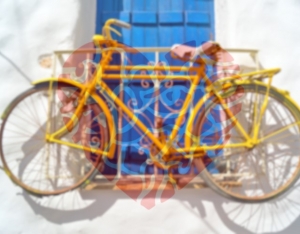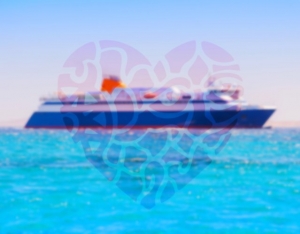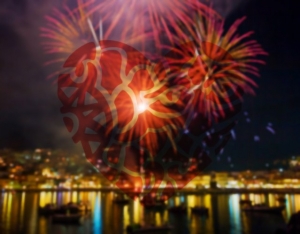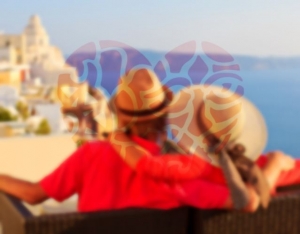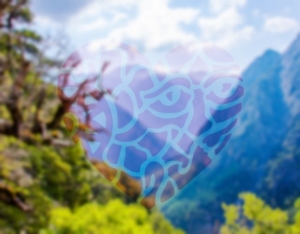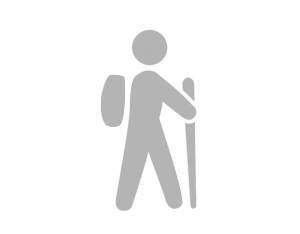Thodoris Bgenopoulos
Inside Kimolos you can move by bus, taxi or your own vehicle. Of course, you can also rent a car or bike from the offices operating on the island.
Kimolos can be reached by ship from the port of Piraeus or by island hopping from any other island in the Cyclades. Milos island is a usual option as it is right next to Kimolos.
The archaeological findings indicate that Kimolos island has been inhabited at least since Neolithic times. According to tradition, the first settler was Kimolos, who gave it its name.
The island in ancient times was also known as Echinousa, probably because of the vipers ("echidnes") who lived (and still are) in the island. However, there is also another version, suggesting that the island might have gotten this name due to the many sea urchins.
During the 5th century BC Kimolos belonged to the Athenian League and became a battlefield during the Peloponnesian War. Actually, the ruins of the sunken city in Ellinika dates back to these ancient years. For the Roman and Byzantine era there is no particular information about Kimolos.
We do know that from 1207, when Marco Sanudo conquered the island, until 1537, Kimolos belonged to the Duchy of Naxos. At that time it was also called Arzantiera. However, in 1537 it was occupied by Barbarossa, and in 1638 it was greatly destroyed by pirates. This forced many people to leave Kimolos and find shelter in other places in the Cyclades (mainly Sifnos).
Generally raids were a massive scourge for the island, a scourge that residents tried to address by building the castle.
Kimolos participated in the Greek Revolution of 1821 and was one of the first to became part of the newly established Greek state.
Kimolos: Relatively small island in the Cyclades with an area of about 37 square kilometers and a coastline of nearly 40 km. Closest to Kimolos you will find Milos island, at a distance of less than a mile.
Kimolos has the shape of a pentagon and its territory is hilly with the highest point, Mount Paleokastro, located at an altitude of 364 meters.
The famous chalk, with which we used to write at school, is mined in Kimolos. No wonder why the island took that name ("chalk"=kimolia" in Greek)! Other occupations of the approximately 600 residents of the island include agriculture, fishing and tourism in the summer.
The island's capital is Kimolos or Chorio, as the locals call it, (who are quick to to correct you if you call it Chora, "we have no Chora, we have Chorio").
Chorio, developed around the Castle of Kimolos, has narrow quaint alleys, several small squares and two interesting museums: the Archaeological Museum of Kimolos and the Folklore Museum of Kimolos.
As you leave behind Chorio, to explore the rest of Kimolos and its beautiful beaches, be sure to stop by Skiadi, while hiking you will discover many hidden natural beauties. If you happen to have your own boat, visiting Gerakias Cave is a must.
Kimolos is a very special island, worth visiting for summer vacations. Small hotels and rooms to let, taverns, restaurants, cafes and bars wait for you here, promising that you will not miss a thing from home!
Each summer, the community's local authorities organize successfully the renown Folegandros Festival. Throughout July the island "floods" with concerts, theater performances, film screenings, literary evenings and all kinds of art events. The events take place throughout Folegandros, Chora, Ano Meria and Karavostasis. Those that take place in Kastro (Castle) are very distinct, as its very nature creates a magical atmosphere.
During your holidays in Folegandros you will feel a cultural completeness.Sure thing! More information about Folegandros Festival can be found in the Folegandros Community, number 22860 41 285.
Folegandros, like all islands in Greece, maintains its customs and traditions over the years.
Easter in Folegandros is a special experience with intense traditional colour. What makes it special is the procession of the icon of Virgin Mary. Easter Sunday begins with the procession of the icon from Chora to every house in Folegandros to give its blessing. Each house welcomes those who carry it with traditional treats and this continues until the icon passes by all houses in the entire island. Then the image returns to the monastery of Panagia from where it will come out again next Easter.
This custom along with the procession of the epitaph in the alleys, the Resurrection with the fireworks and the Easter table, which is accompanied by a special feast, make Easter in Folegandros a once-in-a lifetime experience.
Several panigiria-feasts are also organized in Folegandros, mainly on religious occasion, such as:
• 27th of July, Agiou Padeleimona
• August 6, the Saviour
• August 15, Panagias (Virgin Mary)
The Folklore Museum of Folegandros is in Ano Meria and it is hosted in a "thimonia".
This is a traditional 19th century farmhouse of Folegandros, which once was an autonomous agriculture and farming center.
The Folklore Museum of Folegandros gives visitors the chance to see how the typical farmhouse operated, as well as many other elements of past life in Folegandros. In the museum you will find various buildings such as a cellar, a mill, a cistern and a built-in oven. Upon entering the main house you will see the living room with the traditional loom, a chest, a cuisine with traditional utensils and a very special bedroom. The house is full of objects collected from various local houses, thus giving a pretty good image of how a traditional house in Folegandros was equipped.
As you stroll in the yard, you can still see a small threshing floor, a traditional wine press and the classic dry stone wall which protected the lemon tree of the house, one of the main sources on the island.
The Folklore Museum of Folegandros was created on the initiative of the "Folegandros" Cultural Association, aiming to preserve and promote the islands' traditions. Having chosen Folegandros for holidays, a visit to the Folklore Museum of Folegandros is a must.
More information about the Folklore Museum Folegandros can be found in the number 22860 41 069.
In the northwestern part of Folegandros is a lighthouse, known as Aspropounta Lighthouse.
It was first lit in 1921, having a light that was visible from several nautical miles away. The lighthouse is more than fifty meters above the sea, while the height of the building reaches 11 meters. Initially, the lighthouse operated with fuse and an oil-mechanism, but after 1986 it turned to a more ecological energy source, namely solar.
If you are hiking in Folegandros, it is definitely worth catching a glimpse of the Aspropounta Faros (Lighthouse). You can even combine it with a dip in the nearby Livadaki beach!
In the northeastern part of Folegandros, you will find the renown Chrysospilia.
Chrysospilia is a pretty impressive cave, with its entrance being just a few meters above sea level and actually facing it. The length of the cave is about 300 meters and it is decorated with very beautiful stalactites and stalagmites in various shapes. But what makes Chrysospilia special is the hundreds of ancient names you will see engraved on the walls. Archaeologists believe that Chrysospilia was visited by teenagers from all over Greece under some kind of initiation ceremony. The names' vast majority is male, while in many cases you'll notice that the place of origin is also written.
Access to Chrysospilia is difficult and it depends on the weather. One way to get to Chrysospilia is by stairs. These were made in antiquity and are now called "ellinika skalia" ("Greek stairs"). The cave is also accessible from the sea but not when strong north winds blow.
If you are interested in visiting Chrysospilia, do communicate first with the Folegandros' Community in the number 22860 41285.
Folegandros is one of those holiday destinations where contact with nature is the key element.
First option: hiking. The island has many paths and trails to hike and make your own small discoveries. Fields with dry stone walls, chapels in the middle of nowhere and a wonderful natural landscape wait to be explored, while following the trails you may end up in one of the charming beaches.
Sea. What would be better after hiking? Swim in amazing waters, sunbathe at beautiful beaches until you melt or dive to explore the magical bottom. If you wish so, you can also try scuba diving or go fishing with rod or fishing line from the cliffs. The sound of waves will be your true companion until the first catch.
No matter what you end up doing, one thing is certain: your holidays in Folegandros will not only get you closer to nature but your own self too.

